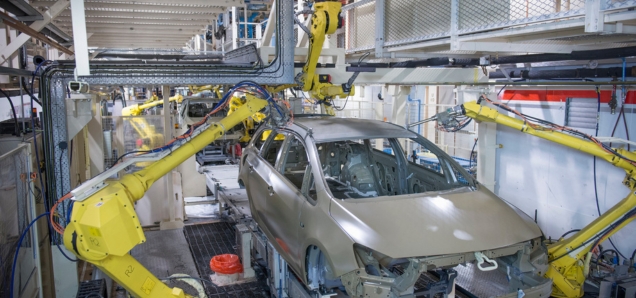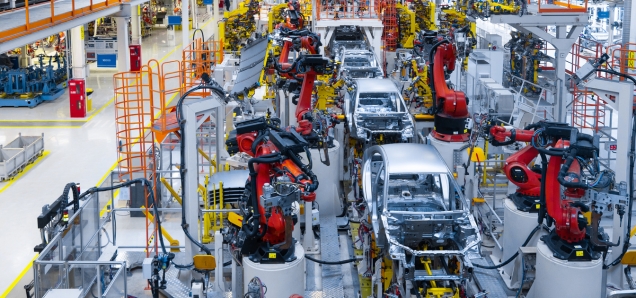Mahindra Accelerates Global Expansion with Strategic Push into South Africa and Australia Markets
India’s automotive industry is making significant strides in the global market, with Mahindra & Mahindra leading the charge as one of the country’s foremost automobile giants. The company has been experiencing remarkable growth in key international markets such as South Africa and Australia, leveraging strategic investments, innovative vehicle platforms, and supportive trade agreements to expand its global footprint.
1. Mahindra’s Strategic Expansion Plans
-
Mahindra & Mahindra has outlined a clear three-phase global expansion strategy, with South Africa and Australia serving as critical initial markets. The company’s current exports to these regions are set to be bolstered by the introduction of four new sports utility vehicle (SUV) models scheduled for launch in 2027. These vehicles will be built on Mahindra’s new NU_IQ global platform, designed to meet international safety and performance standards while accommodating both internal combustion engine (ICE) and electric vehicle (EV) powertrains.
-
The NU_IQ platform represents a significant leap in Mahindra’s engineering capabilities, allowing the company to offer vehicles tailored to the preferences and requirements of diverse global markets. This flexibility is key to Mahindra’s strategy, enabling the brand to compete effectively in markets with varying regulatory environments and consumer expectations.
2. Production and Investment Commitments
-
To support its global ambitions, Mahindra is investing heavily in manufacturing infrastructure. The company has earmarked ₹27,000 crore for investments between FY25 and FY27, with a significant portion dedicated to expanding its production capacity. The Chakan plant in Pune, for instance, is being scaled to produce an additional 240,000 units annually, bringing its total capacity to 760,000 units per year.
-
Mahindra’s monthly production currently stands at 56,500 ICE vehicles and 8,000 EVs, with plans to fully operationalize its EV capacity by the end of 2025. This expansion will enhance Mahindra’s ability to meet growing demand in both domestic and international markets.
3. Focus on South Africa and Australia
-
South Africa and Australia have been identified as priority markets due to their strong demand for rugged, reliable SUVs—a segment where Mahindra has historically excelled. In South Africa, the company is further solidifying its presence by constructing a semi-knocked-down (SKD) facility. This facility will not only serve the South African market but also act as a hub for supplying other African nations, reinforcing Mahindra’s commitment to long-term growth in the region.
-
In Australia, Mahindra’s vehicles have gained popularity for their durability and value, characteristics that align well with the needs of Australian consumers. The company’s strategic focus on these markets is backed by insights that the opportunity outside India is twice the size of the domestic market, making international expansion a lucrative venture.
4. Electric Vehicle Ambitions
-
Electric vehicles are at the heart of Mahindra’s global strategy. The company plans to introduce EVs in the UK as part of the second phase of its expansion, leveraging the UK-India Free Trade Agreement (FTA) to minimize tariff barriers. This agreement will allow Mahindra to competitively price its EVs in the UK, providing a significant advantage in a mature and competitive market.
-
Mahindra’s electric vehicle lineup, including models like the XUV700 EV and the upcoming Born Electric Vehicles (BEVs), is designed to appeal to environmentally conscious consumers in developed markets. The company’s focus on EVs is not only a response to global trends but also a strategic move to align with stricter emission regulations in markets like Europe and Australia.
5. Industry Context and Competitive Landscape
-
Mahindra’s growth in international markets is part of a broader trend in the Indian automotive industry. The sector has been increasingly focused on exports, with automobile exports from India surging by 19% to over 5.3 million units in FY25. This growth is driven by strong demand for passenger vehicles, two-wheelers, and commercial vehicles in international markets.
-
Other Indian automakers, such as Tata Motors, are also making strides globally. Tata Motors, for instance, reported a 57% year-on-year growth in commercial vehicle exports in July 2025, highlighting the expanding global footprint of Indian automotive brands.
-
However, the journey is not without challenges. The global automotive industry is grappling with trade protectionism, geopolitical tensions, and supply chain disruptions. For example, Tata Motors’ subsidiary Jaguar Land Rover (JLR) faced significant headwinds due to U.S. trade tariffs, though recent trade agreements like the UK-US deal are expected to alleviate some of these pressures.
6. Government Support and Trade Agreements
-
Government policies and trade agreements have played a crucial role in facilitating Mahindra’s global expansion. The UK-India FTA has been particularly instrumental, reducing tariff barriers and making it economically viable for Mahindra to export vehicles to the UK. Similarly, agreements like the Comprehensive Economic and Trade Agreement (CETA) between India and the UK have helped stabilize trade relations and create opportunities for Indian automakers.
-
Domestically, initiatives such as the Production-Linked Incentive (PLI) scheme and the PM E-DRIVE scheme are supporting the automotive industry’s shift toward electric vehicles and enhancing manufacturing capabilities. These policies are not only boosting domestic production but also enabling Indian companies to compete on a global scale.
7.Future Outlook
-
Looking ahead, Mahindra aims to build on its momentum in South Africa and Australia while preparing to enter new markets. The company’s phased approach ensures that it can methodically establish its presence, learn from each market, and adapt its strategies accordingly. With the global automotive industry evolving rapidly, Mahindra’s focus on innovation, flexibility, and strategic partnerships will be critical to its long-term success.
-
The Indian automotive industry as a whole is poised for significant growth. By 2030, the market is expected to reach 7.5 million units, solidifying India’s position as the third-largest passenger vehicle market globally . As companies like Mahindra and Tata Motors continue to expand their international presence, they are not only driving their growth but also elevating India’s status as a global automotive hub.
Conclusion:
Mahindra & Mahindra’s growth in international markets like South Africa and Australia underscores the company’s strategic vision and execution capabilities. By leveraging innovative platforms, expanding production capacity, and capitalizing on favorable trade agreements, Mahindra is well-positioned to become a formidable player in the global automotive landscape. As the industry continues to evolve, Mahindra’s commitment to quality, sustainability, and customer-centric innovation will be key to its ongoing success.


